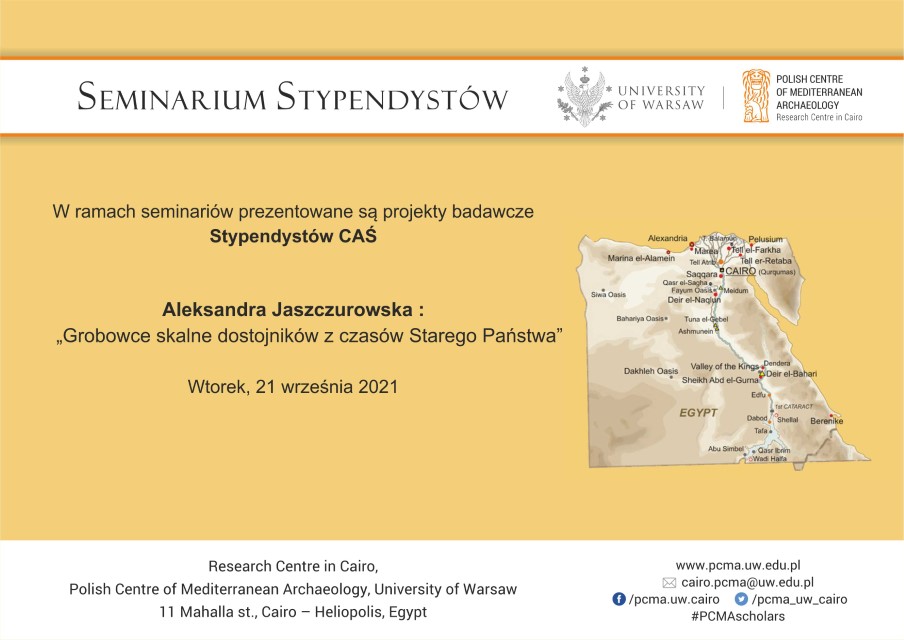After a holiday break, the PCMA UW Research Centre in Cairo resumed presentations of research projects by PCMA scholarship holders. Due to the COVID-19 pandemic, the events remain closed to the public.
Aleksandra Jaszczurowska, “Rock-cut tombs of Old Kingdom officials”:
Abstract: “For us, tombs, wall scenes, inscriptions, and remains of tomb furnishings, which were fortunately not stolen, are the greatest source necessary to understand ancient Egyptian funeral practices – through traditional rituals, practical execution, art, architecture, and individual aspects of everyday life. For the ancient Egyptians, death did not mean the end, but entering a new incarnation in the afterlife, also staying in the land of the living. That is why so much attention was paid to the tombs. It was a kind of life investment. Every detail mattered. There were also all sorts of attempts to protect the deceased from being robbed.
Many of us associate the concept of mastaba as a type of tomb that was first chosen by the rulers, and later also popular among high state dignitaries. Rock-cut tombs, associated mainly with the New Kingdom and the mysterious Valley of the Kings, were used as an alternative to mastaba, but also a more preferred solution for burying officials.
Thanks to a more detailed analysis of the Memphis necropolis and the El-Hawawish site, where tombs forged in rocks were a frequent choice of dignitaries during the Old Kingdom, the meaning of inscriptions, wall paintings, architecture and tomb furnishings, the author tries to answer the questions: who were the tomb owners? Why did they choose stone tombs, not the mastaba? What did they leave behind?”
The seminar was held on Tuesday, 21st September 2021.
Find out more about the PCMA Scholarships.

